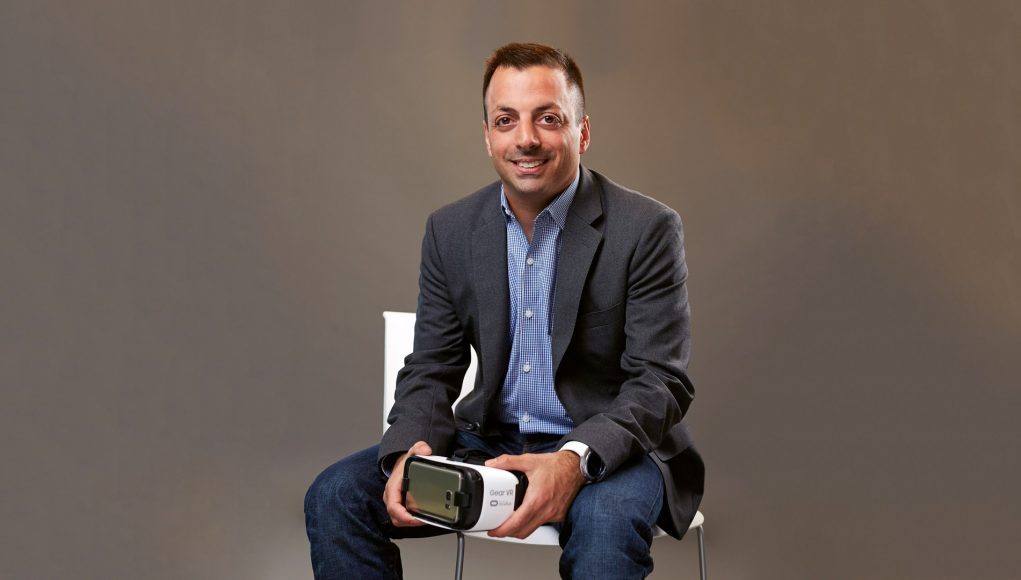Everyone in the VR industry can envision a world in the next 10 years that’s radically changed by virtual reality. From healthcare, education, social, training, cinema, gaming, and more, VR has a lot of Killer Use-cases. But it seems most of the industry is in agreement that the Killer App—a single, platform-defining piece of software that compels buyers—has not yet arrived. Samsung’s Nick DiCarlo weighs in on how we might come to find it.
Every day this week leading up to the 2017 Game Developers Conference in San Francisco, we’re featuring insights on the hunt for the killer app from virtual reality’s leading companies. Today we hear from Nick DiCarlo, VP of Immersive Products & VR at Samsung.
Nick DiCarlo
DiCarlo is VP of Immersive Products & Virtual Reality at Samsung, leading the company’s Virtual Reality (VR) efforts in the United States, including strategy across channels, hardware, services, sales and partnerships. Samsung sees virtual reality as a long‐term opportunity in a range of industries and will contribute by helping VR become more accessible to more people through simple and compelling experiences. In his previous role at Samsung, DiCarlo served as VP of Product Planning and Product Marketing, guiding the product strategies that have powered Samsung USA’s growth in smartphones and tablets, including the launch of iconic new franchises of Galaxy S, Galaxy Note and Gear.
Road to VR:
What traits do you think VR’s Killer App needs to have?
DiCarlo:
VR’s capabilities include a unique sense of presence that make an experience feel real, while freeing it from the constraints of the laws of nature and physics. VR’s killer app will be a service that is born for VR, in the same way that ESPN was born to meet the 24-hour, always-on capabilities of cable TV, and Instagram was born to meet the powerful camera, processing, and connectivity features of smartphones.
Smartphones are ubiquitous, and we see VR developing in the same spirit—something that will be available and useful daily. The evolution of VR services should be enticing to enter on a daily basis, and relevant for a wide range of tastes and interests.
Road to VR:
If you had to make a bet, which sector of VR would you predict as the place where the first Killer App emerges?
DiCarlo:
A ‘killer app’ is one that is used frequently and provides a great deal of value to consumers. That is where companies using VR today are finding ROI for their efforts. [The theme park] Six Flags, for example, is finding success creating excitement for thrill seekers with their ride simulations. Rather than the establishment of a singular “killer app” in VR, we can see VR integrating and enhancing our everyday experiences such as gaming, training, social, education, healthcare, etc.
Road to VR:
Do you think VR’s Killer App will launch in 2017?
DiCarlo:
What were considered amazing VR experiences at the beginning of 2016 were already surpassed by the start of 2017. To use a phone metaphor, we are in the flip phone era of VR. Users are excited to finally experience really good VR, and we expect the technology to continue to evolve for a long time. Phones have evolved at a blistering pace for the last 15+ years and the phone innovations that excited users in 2007 or 2012 are different from those that excite users in 2017. We think VR will follow a similar path. We will see amazing work this year, with continued innovation for years into the future.







